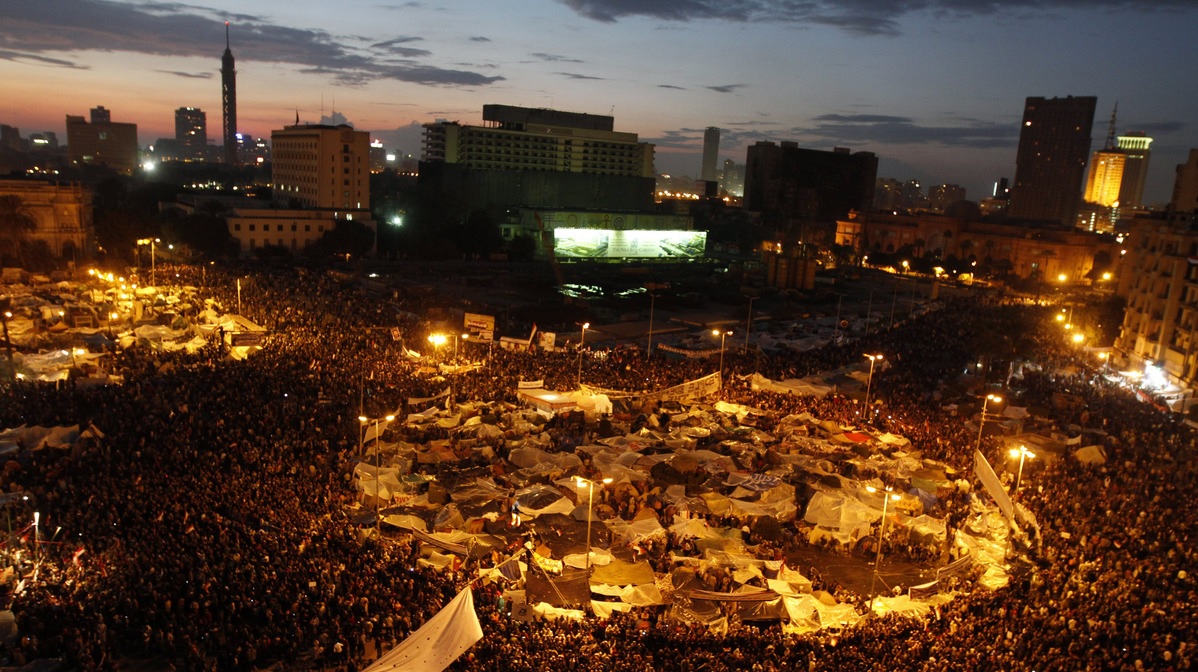In late 2010, almost ten years ago, a Tunisian street vendor who went by the name of Mohamed Bouazizi set himself on fire as a response to state officials harassing him in an attempt to shut down his business with no valid reason. This hopeless act of one individual, set off a domino effect across the Middle East that consisted of fed up and oppressed youth taking on the streets.
The protests against government corruption started in Tunisia in December 2010, with the goal of reforming the political system headed at the time by Zine el-Abidine, who was in power for 23 years. This was the spark needed for a revolution that spread across North Africa and the Middle East. A combination of political subjugation and poor economies led to the spread of the protests to 19 out of the 22 Arab nations.
All these countries had a common factor, their unique version of a dictator who ruled the country with an iron fist for at least over a decade. The countries’ intelligence services suppressed the people in addition to being subjected to martial law in most cases. We saw this with Hosni Mubarak in Egypt, Muammar al-Gaddafi in Libya, Bashar Al-Assad in Syria and so on. The combination of these two factors leads to a strictly controlled population that suffers from injustice and lack of freedom.
Completing nearly 10 years of the turbulent event, things have not much changed in the affected countries except the number of regimes in Tunisia, Yemen, Egypt, and Libya. The socio-economic condition remains the same as was before. Lack of political participation in the government, deprived population, economic stagnation, chaos, and uncertainty is still present.
Arab spring has changed the regimes and got a broken system and weakened institutions in heritage. The Arab region, especially Egypt, Libya, Syria, and Yemen, among others, have not yet recovered from the shock of the mass demonstrations which had toppled the decades-old rulers or the inchoation of mass brutality and killings by the governments. Yemeni and Syrian civil war is such cases of mass brutality and killing of thousands of innocent civilians.
Before Arab spring 2010, the Arab countries were in deep corruption, incompetent authorities controlled the bureaucracy, mass unemployment surging, most of the youth were unable to find jobs after completing their graduate studies. Inflation and mismanagement on the governmental level were increasing every day. People were denied their basic rights such as equality in the economic realm and equal opportunities in every walk of life which a citizen needs. Financial insecurity intensified. The use of the internet was limited or controlled. Institution building was very weak or was absent. Established ones were not as functional as they should be, for proper governance.
The economic condition was a kind of oligopoly. People closely connected to President Hosni Mubarak-at the time of his presidency 2010-received 80 percent of the government credit and then also received 60 percent of overall profits from the credit. The same was with the cronies of Tunisian President Zain Al Abdeen Ben Ali, who received 21 percent of overall sector profits in 2010.
Arab spring filled peoples with hope all over the world as it was spread very fast through social media networking and by the posting of live footage of demonstrations. However, it has brought not the same fruits as it brought for Tunisia or Egypt. It was believed that the revolutions were underway which would replace old regimes with Islamized and Iranian style of governments.
As the monarchies felt threatened by the uprising and the enmities between KSA and Iran were underway on the religious leadership and control of the Holy sites Mecca Medina, both countries ended up backing opposing sides into uprisings and endeavors to contain or minimize each other in the region swayed all over the Middle East which resulted catastrophically. Millions of people have fled from war-torn counties like Syria, Yemen, Libya, and Iraq to the neighboring countries ending up pressing their economies.
Syrian government responded to the protests with heavy force. Civilians were ruthlessly attacked by the police and later by the military when needed. Asad didn’t step down but suppressed the uprising. Iran and Russia backed the Asad regime because he is a Shitte Alvi ruling majority Sunni population and the Russia has a valuable seaport in Syria.
Yemen as well has been struggling to stabilize in which power struggle was raged quickly. A power vacuum was created within the country which invited rebel and other armed groups to join power struggle vis-a-vis external powers to expand their muscles and increase their influence, thus creating the worst humanitarian crisis. Yemeni government backed by Saudi coalition is fighting against Iranian backed Houthi rebels in Yemen who have become a national security threat to Saudia.
In Libya and Iraq, strong militias fighting each other to control the country during which the ISIS declared an Islamic Caliphate which soon perished. The instability still looms and both governments are failing to control their territorial integrity. Khalifa Haftar, beleaguered leader of Libyan forces is fighting to control the center against the Government of National Accord (GNA) which was formed by the UN.
In Egypt, after the deposition of Mubarak, Army dictator Abdul Fatah Al Sisi seized power from the democratically elected government of Morsi and crushed the protestors. He, later, promised reforms but has achieved little and is said to be violating the cause of uprising of 2011.
The Middle East now is seemingly an amalgam of conflicts and instability among other things. If serious steps are not taken and cooperation doesn’t prevail then the status of the Middle East would always remain the same or become even worse since these conflicts have been controlling people and not the other way round.

The author is doing M. Phil in Public Policy and Governance. He is working as a freelancer. Previously worked with HubPages and Washington Post.
